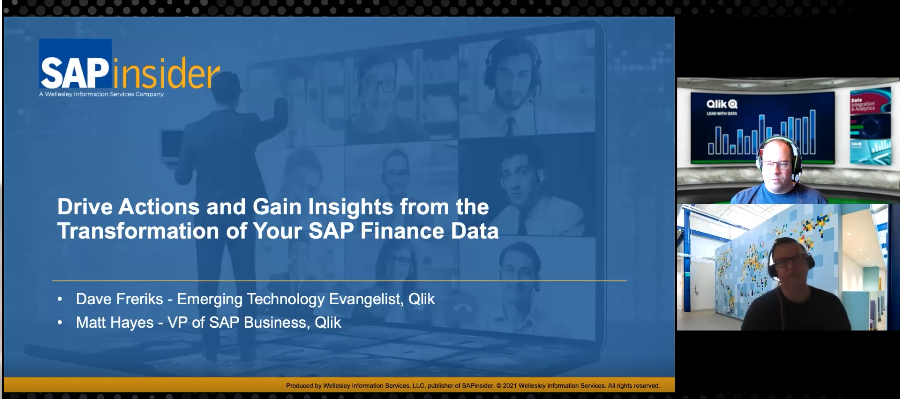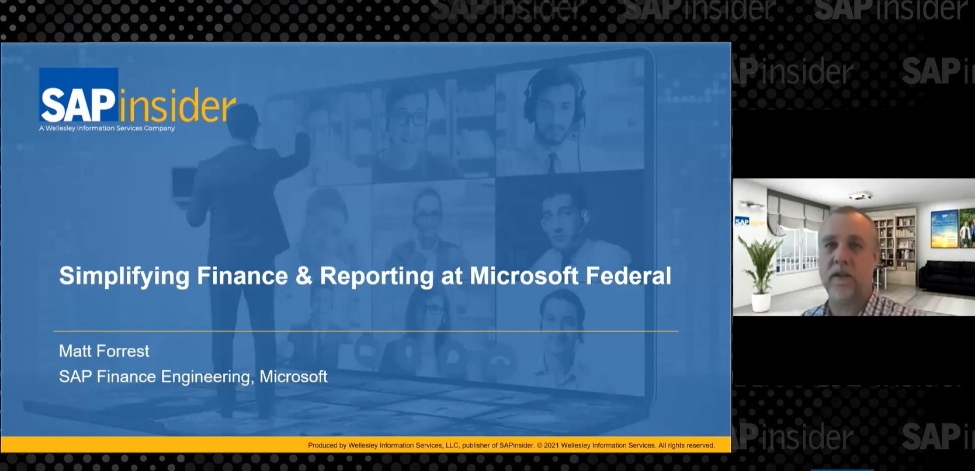The Power of Real-Time Decision Making with SAP S/4HANA Finance
|
insiderPROFILES recently sat down with Cliff Eng, Partner at PwC, and Birgit Starmanns, Senior Director of Product Marketing for SAP S/4HANA and SAP Fiori at SAP. The pair discusses SAP S/4HANA Finance and how the technology addresses today’s business challenges from a single platform. Eng is responsible for leading PwC’s SAP finance transformation practice for clients within the technology, information, communication, and entertainment sectors. Starmanns focuses on business scenarios that cross different lines of business and works to show how integration continues to be relevant to SAP customers in the areas of finance, HR, marketing, and commerce, as well as the extended supply chain. |
||
Q: What big trends and challenges do finance organizations face today?
Cliff Eng: Many companies are seeking to increase their global presence, and that shift causes unique challenges, such as addressing complex tax mandates or a variety of accounting standards within the different countries they intend to operate. One example in the marketplace that we are following closely is the evolving reporting requirements to support transfer pricing based on the proposed action plans for base erosion and profit shifting (BEPS). We are trying to help our clients anticipate and understand the complexity and manage some of those inevitable structural changes. It’s a question of how to stay compliant with the platform they have today, what analytic tools they need, and what changes they have to make within their core ERP, planning, and reporting systems.
Birgit Starmanns: Finance is no longer just a group of spreadsheet jockeys performing reporting retroactively; it is more forward-looking. Today, finance is more involved in the strategic direction of the business in terms of advising counterparts of the financial implications of operational and workforce decisions. The challenges have a lot to do with change management and figuring out how businesses can organize their finance departments to provide that strategic insight. It’s changing the way that finance is working. Today’s finance requires additional insights and additional skill sets to understand what the rest of the organization is dealing with.
Eng: There’s a big shift now because companies are asking how finance can help the business navigate around certain challenges or provide additional insight. We’re seeing a lot of that on the planning and forecasting front. Another interesting trend is not only looking from within, but rather from the view of an external analyst. Companies are trying to determine how they compare against competitors to measure their success on key metrics, such as gross margin; earnings before interest, taxes, and amortization (EBITA); inventory turns; capital expenditure (CAPEX) revenue; selling, general, and administrative (SG&A) as a percentage of revenue; and so on.
Finance is no longer just a group of spreadsheet jockeys performing reporting retroactively; it is more forward-looking.
— Birgit Starmanns, Senior Director, Product Marketing for SAP S/4HANA and SAP Fiori, SAP
Q: What does the evolution of SAP S/4HANA Finance, formerly called SAP Simple Finance, mean for customers?
Starmanns: SAP S/4HANA Finance is our entire portfolio of solutions across the areas of core financials (ERP), enterprise performance management (EPM), and governance, risk, and compliance (GRC). We have re-architected certain components of the portfolio to take advantage of SAP HANA in-memory technology, starting with SAP Accounting powered by SAP HANA, which is our core finance and controlling function. It is not just saving minutes or hours — in some cases, such as profitability analysis, for example, it is saving days.
Eng: In the modernization of ERP systems, software has become softened and more user friendly. The days of the blue screen are gone, and SAP has modernized its software’s user interface and overall experience with SAP Fiori. The use of tiles and dashboards fully embedded into the user experience, for example, has been a visible update. But at the end of the day, it’s about finance getting real-time information and performing fewer account reconciliations. That is the advantage of SAP HANA as well as the internal restructure and the code block of the universal journal. Rather than end users pulling from many different tables to assemble a report, the universal journal supplies information in a single table. The ability for users to pull that into an SAP HANA view allows for more efficiency in reporting, self-service usability, and custom report creation.
Q: What are specific benefits to global enterprises?
Starmanns: With SAP S/4HANA Finance, it doesn’t matter how many back ends you have. Whether they are all SAP systems or there is a mix of legacy systems, you can bring all that information into one instance and process finance from that one database. You might have multiple legacy systems in the back end, but you can still take advantage of the power of SAP S/4HANA Finance by bringing everything into the central finance instance, even if the rest of the business is not quite ready to go there yet.
Eng: SAP has been investing in preexisting templates that are country specific for a long time, and those templates are still available in SAP S/4HANA Finance. Now, beyond the pre-delivered capabilities, there’s an added advantage with updates to intercompany transactions, which tend to be problematic for many companies, and transfer pricing capabilities in terms of latency and settlement. And having everything contained in a single enterprise application extends these core capabilities of the global platform.
Q: How do SAP and PwC help customers evaluate their needs?
Eng: At PwC, we have broad capabilities within our management and technology consulting practices. Together, with our relationship with SAP, we can create a tailored roadmap with our clients. We can provide our clients a clearer idea of where potential opportunity levers may exist within their businesses. Certain aspects of those opportunities may be enabled by technology and aligned under a strategy over a time horizon, perhaps over the next five years. This is critical for many of the IT functions to understand how this comes together. Sometimes certain types of projects have to be sequential in nature or there might be limitations to how companies implement the technology, but it’s important to consider what other gains they might achieve and whether that offsets some of the cost and other barriers.
Starmanns: The most impactful word I would use here is “choice” — and that depends on what companies need to resolve. They are able to choose which capabilities are most beneficial to them. Back in my consulting days, before I worked for SAP, many companies were undergoing big-bang implementations, but maybe there are pieces of capabilities that can help solve a company’s needs in the short term. It might be a better fit to implement only specific capabilities that are required, such as planning or profitability analysis. Some pieces might be better on premise; others might be better in the cloud, such as a supplier business network with SAP Ariba or all financial processes only for a subsidiary. It’s not all or nothing — rather, it’s coming up with an infrastructure that meets an individual company’s needs. We walk them through what their biggest challenges are and then show them, from our value engineering benchmarking database, how other companies have managed to get ROI from our solutions and what will help them get the biggest bang for their buck.
Q: How does a focus on business transformation help the implementation strategy?
Starmanns: It’s not just automating the processes they have today, but looking at how they do business. Automation might make business processes faster, but that does not necessarily improve those processes or help the business improve data visibility to make better business decisions. With the time saved from gaining efficiencies, finance can add much more strategic value to the rest of the business. And to transform your business, it’s about being more proactive and predictive and being able to identify those value drivers that affect financial results.
Eng: You can always drop in technology, but there’s greater benefit in going through more of a transformation that considers strategy, structure, people, processes, and technology collectively and how they interact together to get the value you need. Technology by itself is not enough. You have to think more holistically about how all those things together can achieve that common goal. Most of our clients don’t come to us asking for new technology. Rather, they see an opportunity they want to obtain but are unsure how to get there or whether they are leveraging their assets appropriately. They aren’t sure if they are as productive as their competitors or if they are operating in the right areas and capacities. PwC approaches these customers with more of a business-led perspective as opposed to a technology-led perspective. Technology is always going to be an enabler, but the business has to be able to achieve those goals to thrive.
SAP S/4HANA Finance is more than finance: It’s a broad set of capabilities brought into a single platform and a single common table structure.
— Cliff Eng, Partner, PwC
Q: What differentiates SAP S/4HANA Finance from other solutions on the market?
Eng: Fundamentally, the re-architected SAP S/4HANA suite extends the core capabilities. For example, consider planning, budgeting, and forecasting, which typically are not ERP capabilities. SAP has brought that into the suite. In general, a toolset would have separate point solutions for analytics, GRC, and treasury management functions. SAP has brought all that into the suite.
SAP S/4HANA Finance is more than finance: It’s a broad set of capabilities brought into a single platform and a single common table structure. It’s comparing a fully integrated suite to a competitor’s various point solutions. The benefit is the tight integration of the components connecting together, and they are glued on a single foundation of the universal journal. That’s the advantage in the core. The fundamental difference is the performance of the in-memory database to minimize duplication of data, a capability that is then extended with the front-facing user interface.
Starmanns: Because we have the universal journal data structure, finance can look at both management accounting and operational data in a way that it couldn’t before. It is being able to integrate finance into other operational aspects of the business, whether it’s marketing, sales, service, manufacturing, procurement, HR, and so forth. And the ability to get at that data without IT is very powerful. It’s putting information at the fingertips of the business people that need to make decisions.









